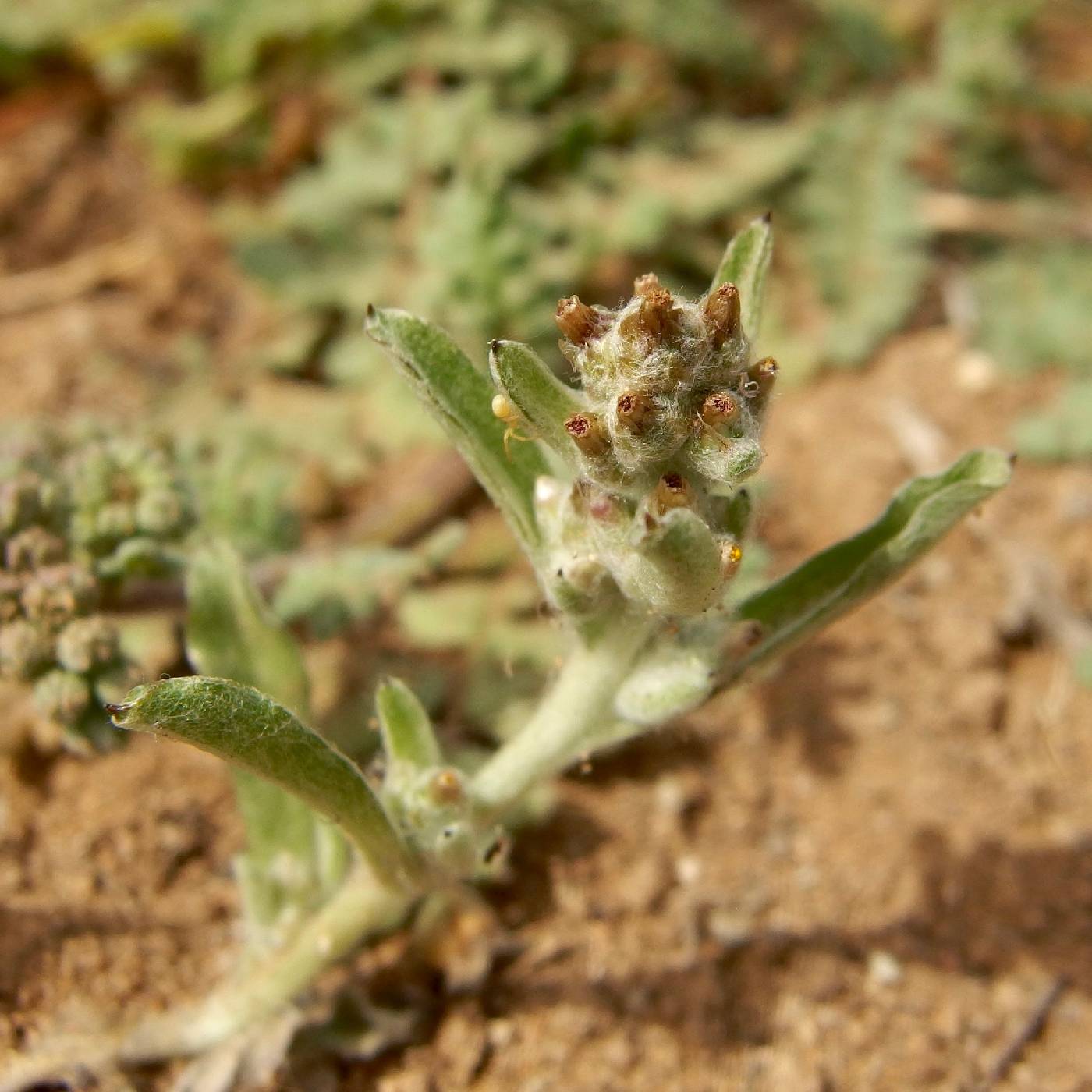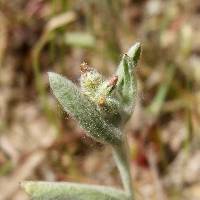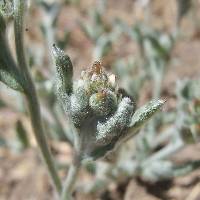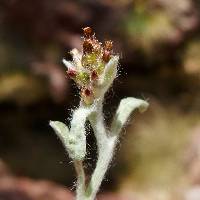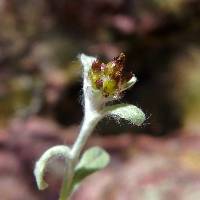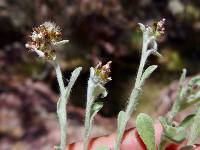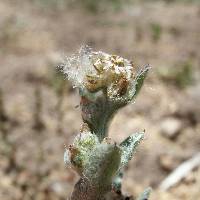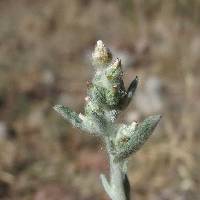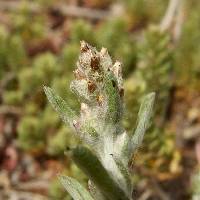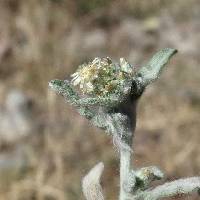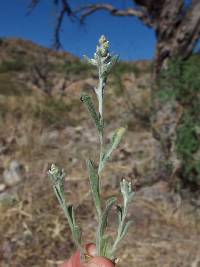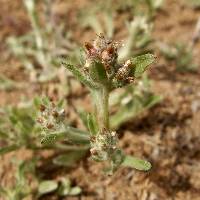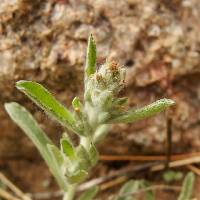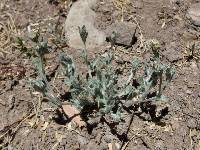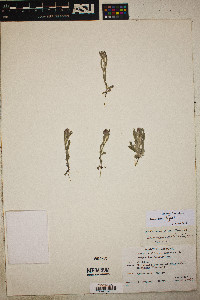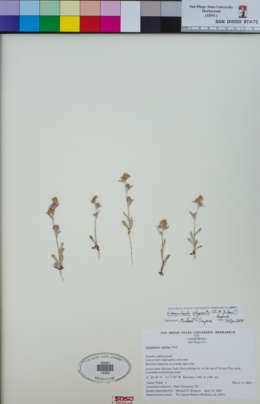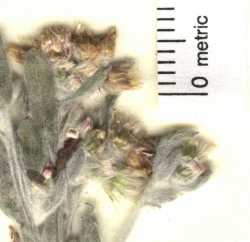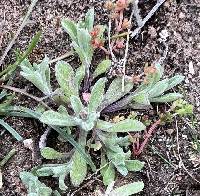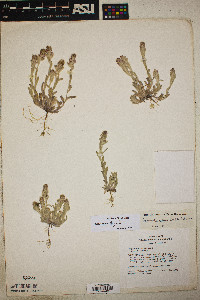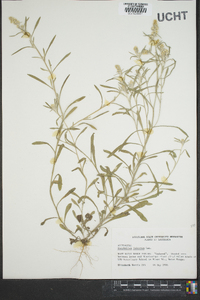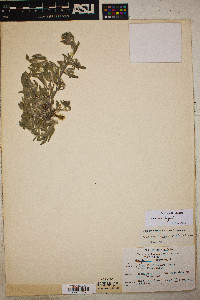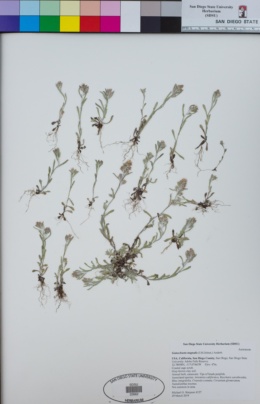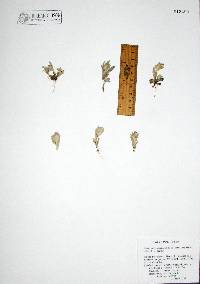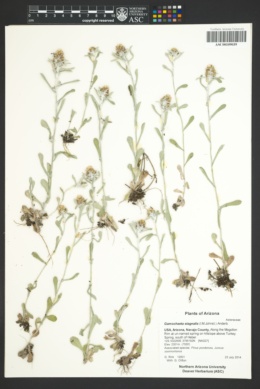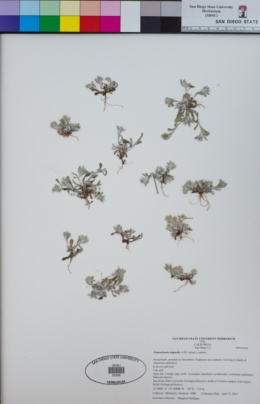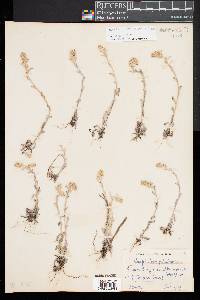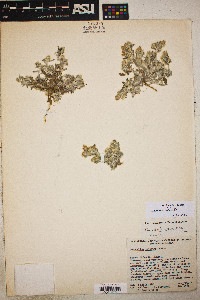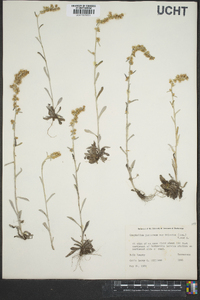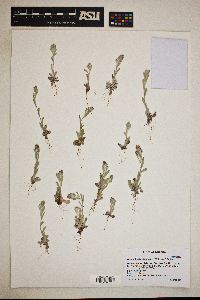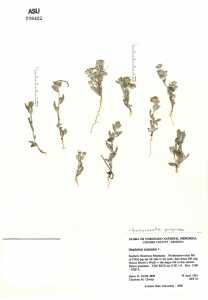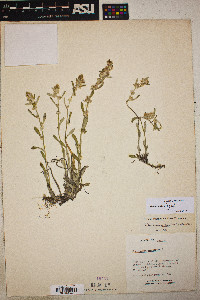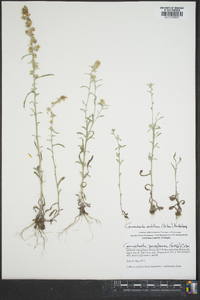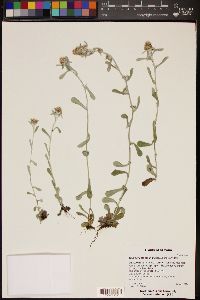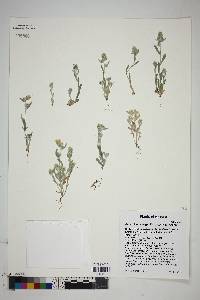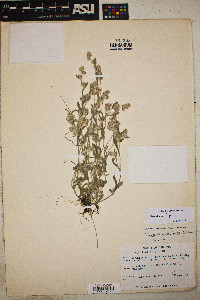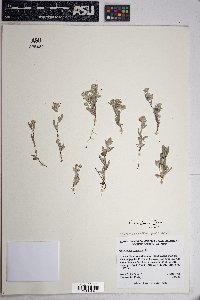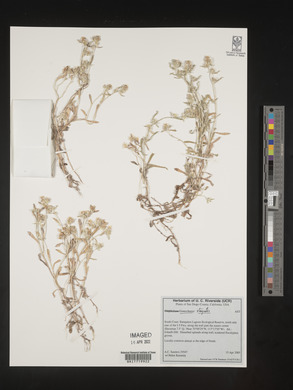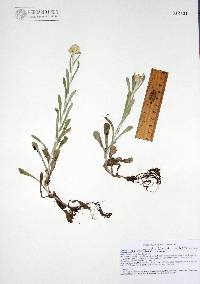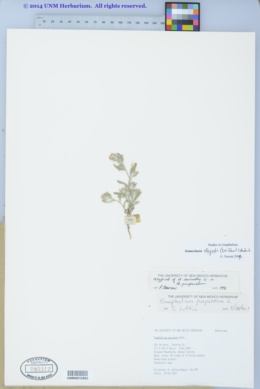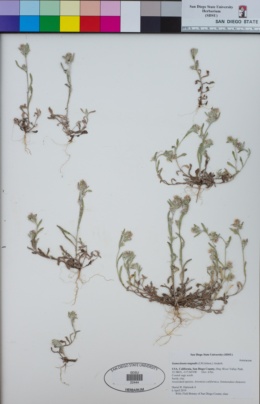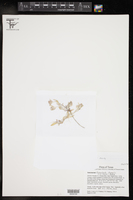Gamochaeta stagnalis
|
|
|
|
Family: Asteraceae
Thread-Root Everlasting
[Gnaphalium stagnale I. M. Johnston] |
Annuals, 2.5-20(-35) cm; usually taprooted, sometimes fibrous-rooted. Stems erect to decumbent-ascending, densely and loosely arachnose-tomentose. Leaves mostly cauline, basal usually withering before flowering, blades mostly oblanceolate to oblong-oblanceolate (± uniform in size and shape), 1-2.5(-3) cm × 2-6 mm, faces concolor or weakly bicolor, both loosely tomentose or adaxial glabrescent and greener. Heads in capitate clusters (in smallest plants) ca. 1 cm or interrupted, spiciform arrays 1-3(-12) cm × 8-12 mm (pressed, sometimes branching at proximal nodes, glomerules subtended by divergent-ascending bracts similar to distal cauline leaves). Involucres campanulate, 2.5-3 mm, bases sparsely arachnose. Phyllaries in 3-4(-5) series, outer ovate-triangular, lengths 1/2-2/3 inner, apices broadly acute, inner oblong, laminae usually purple (immediately beyond stereome and along proximal margins), apices (whitish) rounded-obtuse. Florets: bisexual (2-)3(-4); all corollas purplish distally. Cypselae (tan) 0.3-0.5 mm. Flowering (Mar-)Apr(-May). Sandy, often moist soils, washes, permanent streams, canyon bottoms, flower beds, riparian, desert grasslands, juniper-grasslands, creosote bush-mesquite-cholla, oak woodlands; 900-1800 m; Ariz., N.Mex.; Mexico. Morphologic differences between Gamochaeta antillana and G. stagnalis are subtle but consistent; the two are distinct in geography and ecology. The previous attribution of G. falcata (Lamarck) Cabrera to Arizona (G. L. Nesom 1990f) was based on specimens of G. stagnalis. Those plants have been misidentified as G. purpurea also.
FNA 2006, Jepson 2012 Duration: Annual Nativity: Native Lifeform: Forb/Herb General: Annual to biennial herbs, 2-35 cm tall, usually from a taproot but sometimes from fibrous roots; stems erect to decumbent-ascending; herbage densely and loosely arachnose-tomentose (with cobwebby hairs). Leaves: Alternate and sessile, in a basal rosette and along the stems (cauline), the basal leaves usually withering before flowering; blades mostly oblanceolate to oblong-oblanceolate, 1-3 cm long and 2-6 mm wide, the upper and lower surfaces about the same color and loosely tomentose. Flowers: Flower heads discoid, arranged in capitate clusters ca. 1 cm high (on small plants) or interrupted spikes 1-12 cm high (on larger plants); involucre (ring of bracts wrapped around the flower head) bell-shaped, 3 mm high, with cobwebby hairs at the base, the bracts (phyllaries) in 3-4 graduated series, straw-colored and partially infused with purple (this difficult to see without a hand lens); florets numerous, all discs, the corollas yellowish with purple tips. Fruits: Achenes tan, oblong, to 0.5 mm long, slightly flattened, covered with nodule-like hairs (the hairs only visible under high magnification); topped with a pappus of 12-28 barbellulate bristles which are connate into a ring at the base, and readily falling o Ecology: Found on sandy, often moist soils in disturbed areas, washes, permanent streams, canyon bottoms, flower beds, riparian areas, desert grasslands, juniper-grasslands, creosote bush-mesquite-cholla communities, and oak woodlands, from 3,000-6,000 ft (914-182 Distribution: AZ and NM; south to MEX. Notes: This annual herb is a recent segregate from Gamochaeta purpurea (syn. Gnaphalium purpureum). It is distinguished from that species by its height and growth form, which tends to be shorter, less rigidly erect, and with more stems emerging at the base of the plant; the leaves which are about the same color on the upper and lower surfaces (G. purpurea is distinctly more grayish on the lower leaf surfaces); and the inner (and taller) rows of phyllaries which are bluntly rounded on the tip and tend to be more strongly infused with purple (use a hand lens; G. purpurea has pointy-tipped phyllaries which are less often purple-infused). G. purpurea is a somewhat more robust plant, considered to be a biennial to short lived perennial (this species is commonly annual but can persist into a second year). Ethnobotany: Specific uses for this species are unknown, but other species in the genus have uses. Synonyms: Gnaphalium falcatum, Gnaphalium purpureum var. falcatum Editor: LCrumbacher2012, AHazelton 2016 Etymology: Gamochaeta comes from the Greek gamos, "marriage, stigma, female part," and chaite, "bristle, mane, long hair," thus meaning "united bristle" in reference to the connate pappus bristles; stagnalis means found in stagnant water. |
|
|
|

